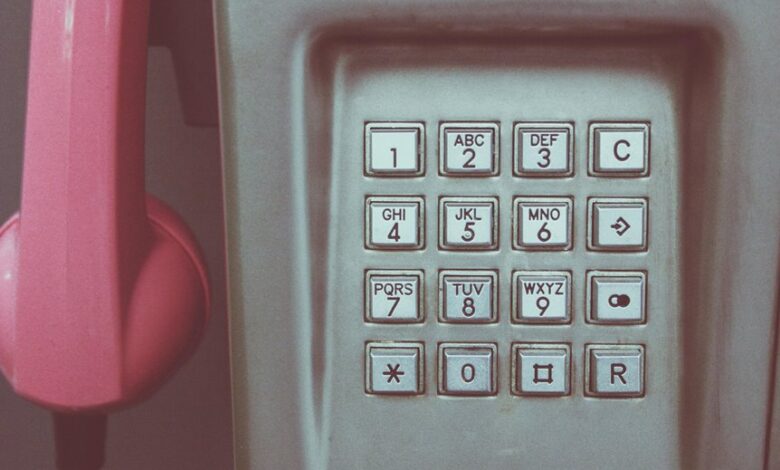Who Tried to Reach You From: 4164917953, 4166169082, 4166737061, 4166739279, 4167220847, 4167365309

The numbers 4164917953, 4166169082, 4166737061, 4167220847, and 4167365309 have recently generated curiosity. Each call comes from the Toronto area, but their identities vary significantly. Some are linked to businesses or residents, while others are associated with telemarketing or remain unknown. What are the implications of these calls? Understanding their origins may reveal more than just a number. The mystery surrounding these calls begs further exploration.
Understanding the Area Code 416
Although area codes are often taken for granted, a closer examination of area code 416 reveals its significance within the telecommunications landscape of Canada. Established in 1947, 416 serves Toronto calling, reflecting the city’s prominence.
Its area code history showcases the evolution of communication, influencing how residents and businesses connect. Understanding this code provides insight into Toronto’s vibrant culture and dynamic economy.
Breakdown of the Specific Numbers
When examining the specific numbers associated with area code 416, one uncovers a myriad of insights that reflect both geographic and demographic nuances. Analyzing these numbers can aid in caller identity verification, enhancing understanding of their phone number significance.
| Phone Number | Potential Origin | Caller Type |
|---|---|---|
| 4164917953 | Toronto | Business |
| 4166169082 | Mississauga | Residential |
| 4166737061 | Etobicoke | Telemarketing |
| 4167220847 | North York | Unknown Caller |
Common Reasons for Receiving Unknown Calls
The prevalence of unknown calls can often be attributed to two primary factors: telemarketing and potential scams.
Understanding the motivations behind these calls reveals a landscape filled with promotional offers and alarming fraud alerts.
Analyzing these common reasons may provide insights into the caller’s intent and the recipient’s response.
Telemarketing and Promotions
Telemarketing remains a prevalent method for businesses to reach potential customers, often resulting in a barrage of unknown calls.
Companies deploy various telemarketing strategies to promote products and services, leveraging promotional tactics to capture consumer interest.
These unsolicited calls aim to engage individuals, sometimes leading to offers that promise significant benefits, but they can also infringe on personal space, raising questions about privacy and consent.
Scams and Fraud Alerts
Unknown calls can often signal more than just telemarketing attempts; they may also be indicative of scams and fraudulent schemes targeting unsuspecting individuals.
Common reasons for such calls include:
- Impersonation of legitimate organizations
- Offers of unrealistic financial gains
- Requests for personal information
Understanding these scam tactics is crucial for fraud prevention, empowering individuals to protect themselves against potential threats.
How to Identify Legitimate Calls
How can one discern the legitimacy of a phone call in an age rife with scams and unsolicited solicitations?
Employing effective call identification techniques is essential. Individuals can utilize caller verification methods, such as searching the number online or using caller ID apps.
Observing the caller’s tone and intent can also provide insights, ultimately empowering individuals to make informed decisions about answering unknown calls.
What to Do If You Receive a Suspicious Call
Receiving a suspicious call can provoke a range of reactions, from curiosity to concern.
It is crucial to respond thoughtfully. Consider these steps:
- Analyze the caller’s behavior for red flags.
- Avoid sharing personal information.
- Use reporting mechanisms to document the call.
Taking these actions helps protect individual freedom while contributing to broader efforts against suspicious caller behavior.
Resources for Reporting Unwanted Calls
A variety of resources exist for individuals seeking to report unwanted calls, each designed to aid in the battle against intrusive communication. Call blocking apps provide immediate solutions, while reporting agencies help track and address these issues on a larger scale.
| Resource Type | Description |
|---|---|
| Call Blocking Apps | Tools to prevent unwanted calls |
| Reporting Agencies | Organizations to file complaints |
| Consumer Hotlines | Direct assistance for victims |
Conclusion
In navigating the landscape of phone calls from various Toronto numbers, one must approach each interaction with caution, much like a detective piecing together clues. The distinction between legitimate inquiries and potential scams is critical, underscoring the need for vigilance and verification. By understanding caller identities and employing protective measures, individuals can safeguard themselves against unwanted solicitations. Ultimately, fostering awareness of these numbers can empower one to make informed decisions in an increasingly complex communication environment.




